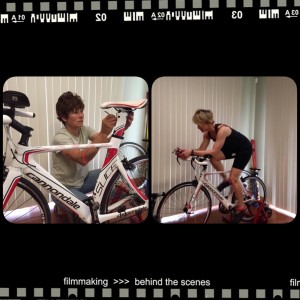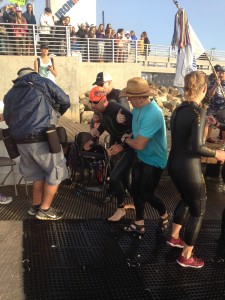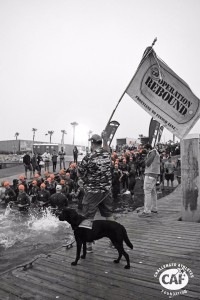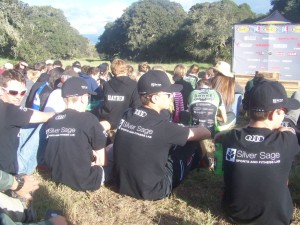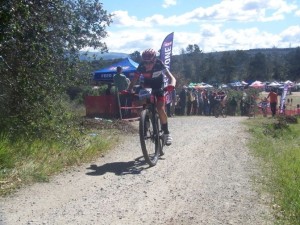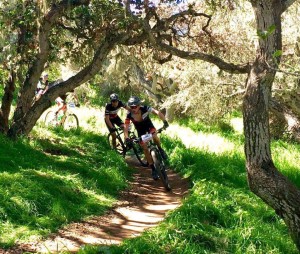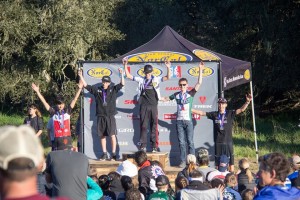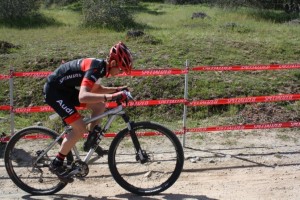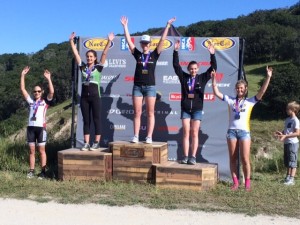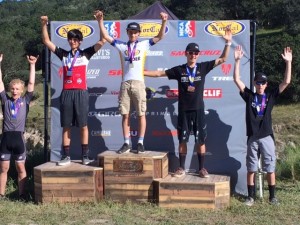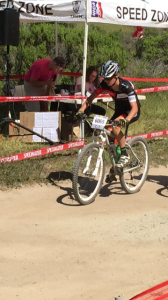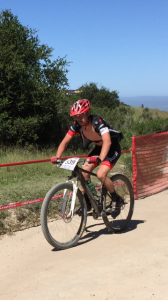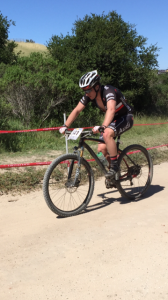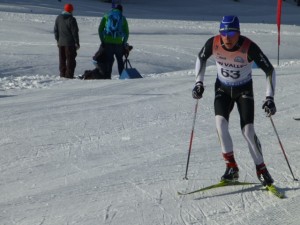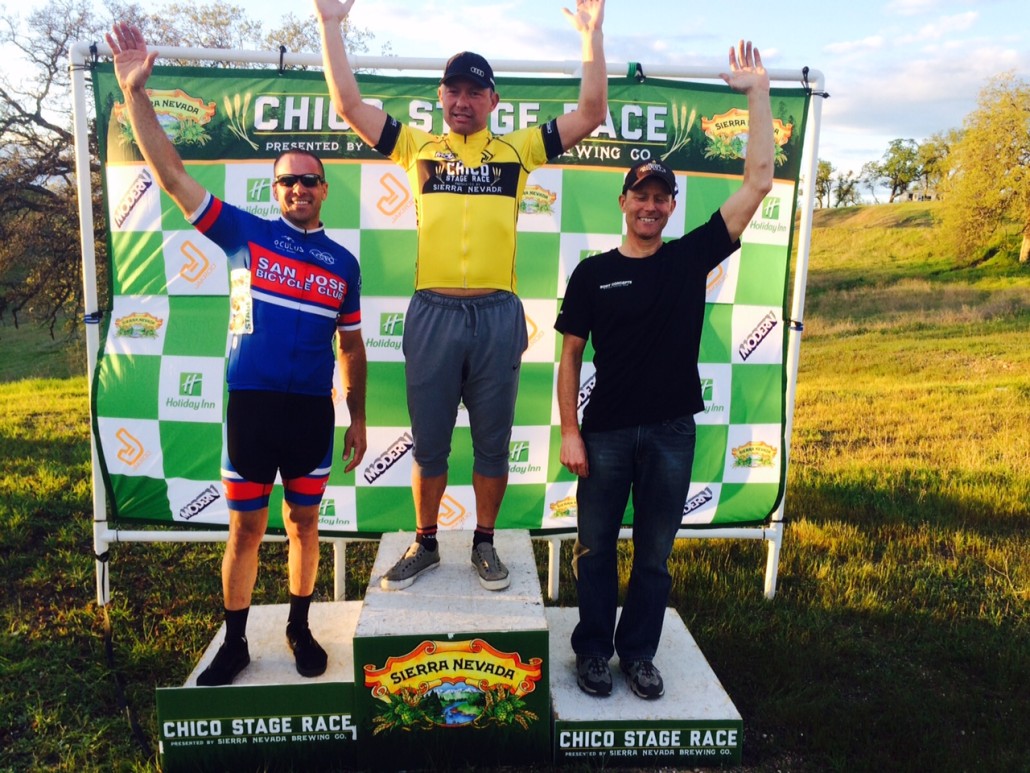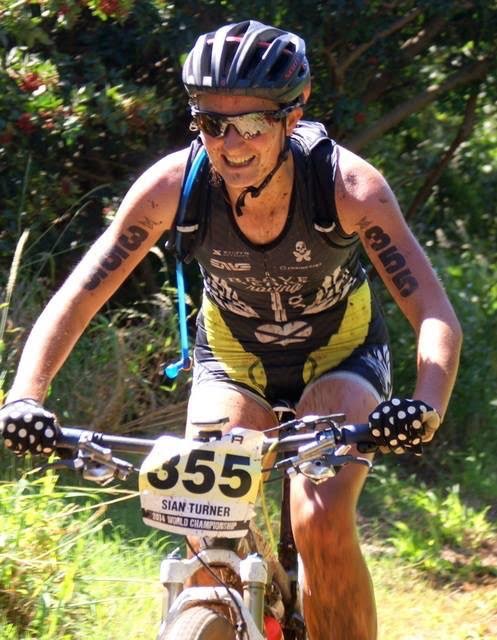Contributed by Sian Turner, o2fitness and Silver Sage athlete, her Spring Cycling Camp Diary below…
The hidden road cyclist in me jumped at the chance to join Julie Young’s 3-day Spring Training camp in Reno this past weekend. Comprised of mainly Reno Wheelwomen, plus a couple of brave guys, and me, the 20 of us knew we were in for a tough few days. The unpredictable April weather cooperated beautifully and we all showed up eager to learn all we could from Julie and get a good boost to our fitness and skills for the upcoming season.

Off-Bike Activation, Mobility and Stability
Julie’s program for the 3 days was expertly designed with purpose to every pedal stroke; no two days being remotely the same, yet equally challenging. Each day began with yoga mats and mini-bands for an off-bike session comprising of bike specific strength and mobility work. Julie demonstrated and explained numerous exercises, which when committed to long-term, either stand alone or as a pre-bike warm-up, increase pedaling efficiency, balance out weaknesses in posture or on bike movements, and develop the neuromuscular patterns required for hours and years of happy, strong, and injury-free cycling.

Day 1 – Speed and Power, and Force Development
After our clams, planks and push-ups were done, we hopped on our bikes to ride to our workout location for the day. Day 1 took us to the infamous Air Center Crit course where we would hone our sprinting abilities, both in and out of the saddle before becoming Renshaw’s and Cavendish’s for the day to practice sprint lead-outs in some friendly competition. This kind of riding, as a mountain biker, is about as foreign as it gets on two wheels for me, but with Julie’s explanations of achieving good mechanics for both in and out of saddle sprints, it began to make sense how this is hugely applicable to any style of riding. Generating efficient power to the pedal by recruiting the right muscles, while maintaining strong core posture is exactly what is required for mountain biking and road racing alike. As we rode round a 1km circle, sprinting the back 200m straight, with high cadence recovery in between, we were given plenty to think about, different techniques to try, and ways to improve each time. Riding round and round in circles was never this fun before! To complete our sprint workout we pedaled a beautiful low-traffic rural road to add a little climbing to our day – the paved road ended after a few miles and we dirt riders were out-numbered and lost the vote to continue on gravel vs. turning back for home.

Day 2 – Hill Intervals
Day 2 began as did day 1, on our yoga mats with mini-bands taking instruction again from Julie on the off-bike exercises, each of us hoping they would wake our tired legs up ready to tackle the morning’s hill intervals. We set out to our hill climbing location at a far faster pace than I expected – I sat near the back of our group secretly hoping my legs would come around, or the spritely imps at the front would slow down, or both. A 30 minute warm up and we stopped to regroup and listen to Julie’s instructions for the workout. We would be doing sub-threshold or threshold hill repeats between 8 and 12 minutes depending on where each of us were with our training; we would be focusing on smooth pedaling and experimenting with our cadence to get a feel for where our most efficient point was.
A major part of this workout also was mental – focusing on the purpose for the workout so we got the most out of it possible on an individual basis. Correct muscle recruitment, remaining efficient while the effort increased to uncomfortable levels is a difficult, but essential skill to master for all types of rider or racer. As a mountain biker, I am usually much happier with a hill to attack rather than a straight to sprint, and Julie’s calm but clear instructions had me ready to hit the workout with purpose, my legs all of a sudden raring to go. Everyone set off on their own individual mission to conquer the hill several times over the next hour, each with their own goals for the session. While it was an individual workout, having everyone else there on the same hill at the same time gave added purpose and incentive in supporting each other to achieve their best on the day.

Active Recovery Rides
On the first two days, Julie also led a late afternoon active recovery session; explaining that spinning out tired legs both aided recovery and added an element of endurance to the day. Those that joined these rides definitely felt the benefit leading into the following day. Not to exclude the social aspects of the sport of cycling, on the Saturday evening we all gathered for a team potluck meal. This was a great opportunity to get to know each other better and discover more about what each our cycling goals were. We had a wide range of cyclists present at the camp; from the Bike Like a Girl RAAM 2015 team working towards their massive task of racing across America as only the second ever 8-woman team this June, to experienced road racers and time-trialists, a couple of token mountain bikers, and a host of century riders with focused goals of increasing their endurance and skills as committed cyclists. The evening was relaxed and incredibly enjoyable, but petered out early with a third day of riding scheduled for the following morning.
Metabolic Efficiency Training Talk
During our off-bike warm up session for day 3 – an endurance focused day with some on bike specific strength built in – we discussed whole food diets and metabolic efficiency. Some in the group already ate ‘Paleo’ and/or knew the concepts of metabolic efficiency, some had had great results already with dietary changes for themselves, while for others these were completely new concepts. It was a great opportunity to impart information and learn from others and everyone left on their bikes with new ideas and more questions on this and related topics.
Day 3 – Specific Cycling Strength via Slow Frequency Repetitions and Endurance
Day 3’s ride began with some hills with a difference – so called SFRs (Slow Frequency Repetitions); performed primarily at endurance pace (for today anyway), in a big gear providing just enough resistance to slow rpms to between 40 and 60. The purpose of the workout being to highlight and work on weaknesses in the pedal stroke and to smooth everything out while performing what effectively is a functional strength workout on the bike. This was a new concept to some who hadn’t been part of Julie’s training programs already, while for the rest of us it was a good refresher on the focus of these weekly workouts.
After SFRs were successfully completed, we split into groups for our endurance ride – one group was to hit a flatter rolling loop around beautiful Wahoe Valley, another to the top of Geiger grade (an 8mile 2200ft climb) and back, while the third would take Geiger Grade over the top to Virginia City, loop to Carson City and back to Reno. I joined the long ride – a loop I had never done, and with nothing I’d rather being doing the rest of the day other than riding my bike, the longest loop possible seemed the way to go! A group of us headed out up Geiger (at a pace I’d argue wasn’t exactly ‘endurance’), and, leaving some to turn around, 5 of us headed over the top to one of the weirdest (sorry, I should say, most ‘unique’) destinations in Nevada, Virginia City. Virginia City is an original silver mining boomtown from the 1800s, which somehow has all the original buildings (and some of the people it seems to me!) from the era, including the Saloon; it’s quite the tourist destination. Swiftly moving through the wooden boardwalks of the main street, we descended out of Virginia City with sweeping views of the Carson Valley, and before we knew it were pedaling through the back roads of Carson City (past some more very unique Nevadan landmarks!) on our way back to Reno. It was the perfect ride to end our 3-days of cycling immersion.



